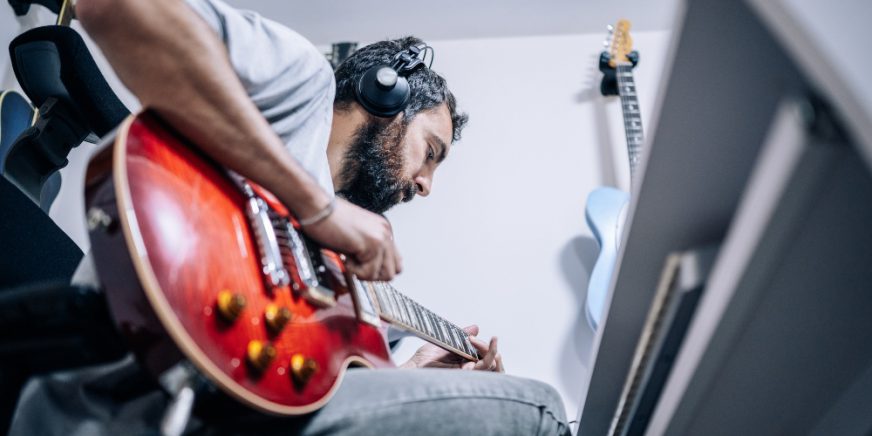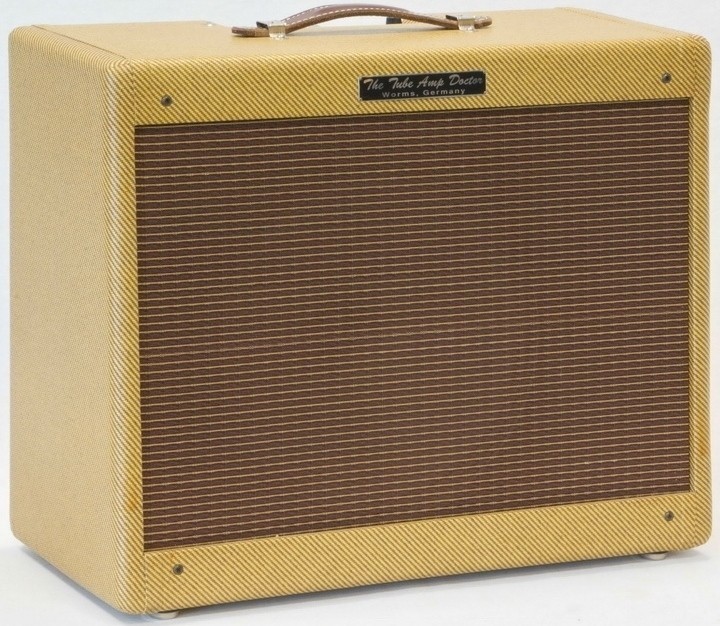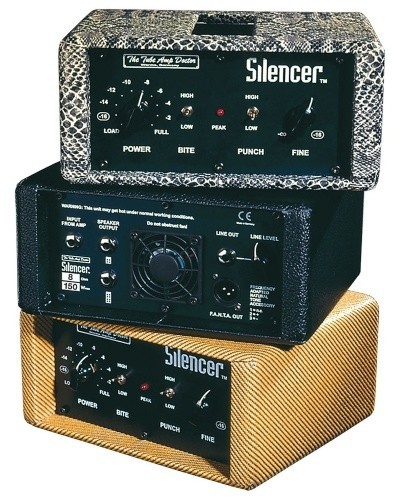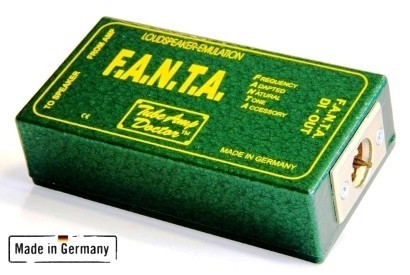« The best addition for practice amps »
In today’s article, we’ll present the Power Soak or Power Attenuator and tell you what the technology is all about and why hot air sometimes just makes sense!
The problem with volume
Tube amplifiers are the gold standard when it comes to good guitar sound – whether it’s in live performances, at work in the studio or during rehearsals. The warmth, naturalness and structure of the sound are unmatched with all the technical innovations and experiences. Unfortunately, amps with tubes have one big disadvantage: to achieve their full sound range, the tubes have to be put under stress. That is to say: Good sound requires a certain basic volume! What can be celebrated at a rock concert and at least controlled in the studio, causes arguments at home or during late-night practice sessions. But don’t worry – we wouldn’t be the TAD if we didn’t have a solution to this “little problem” as well.
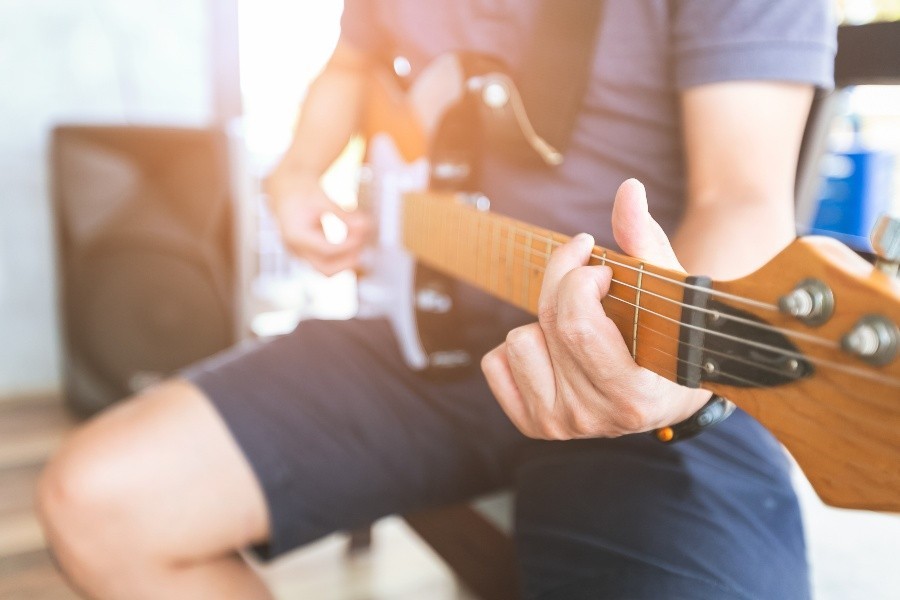
Why are tube amplifiers so loud?
First of all, we’d like to present our readers with a short, technical idea of why a good tube sound always goes hand-in-hand with a relatively high volume. There are two factors which play a role here: the technical design of the tube amplifier and the way human hearing works.
Volume of the amplifier – the technical aspect
Especially in modern guitar music (from blues and jazz to the extreme forms of metal and punk), the power amplifier plays a major role in guitar sound: by overloading the tubes we create an overloaded signal, which we refer to as power amplifier distortion. In addition to the pure sound, the signal gains numerous overtones in the power amp distortion, which wrap themselves around the actual sound like a cloak. It’s the power amplifier noise which makes up the creamy, rumbling sound of electric guitars. To achieve this sound, the power amplifier has to be loaded with its tubes to such an extent that the tubes of the practice amp or amplifier go into saturation. This takes significantly longer with the power amp distortion in the power amp than with the preamp and therefore requires higher volumes – and tolerant neighbours, if we translate this principle to the practice amp at home.
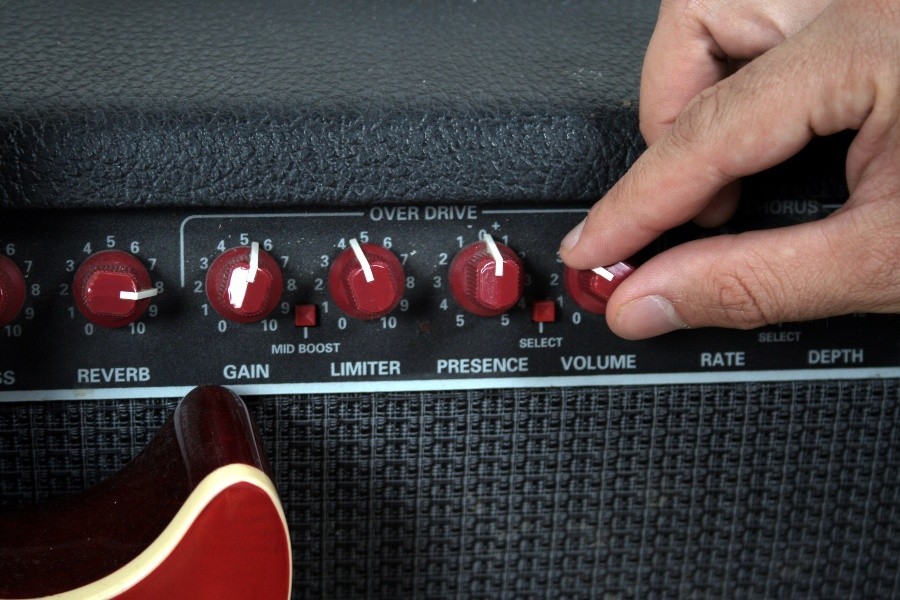
Volume perception of human hearing
With good sound, our hearing plays a trick on us, with the result that in case of doubt higher volumes are preferred. If you compare two completely identical sound signals in terms of the perceived, subjective sound quality, you usually perceive the louder sound as being better/higher quality. Of course, this property of our hearing doesn’t just play a role in the tube amplifier – it affects all types of amplified music.
Quiet tube amplifiers – options
Of course, volume per se is no reason to refrain from using a tube amplifier for rehearsing. Quite the contrary. Even at home, we just can’t and don’t want to do without the sound we love. Fortunately, there are several ways to limit the volume load on our own ears and those of our fellow human beings. In addition to special practice amps, many amplifiers offer the possibility of enjoying the sound of the guitar directly using the headphone output or of providing a lower level by reducing power. If these options aren’t available, a so-called Power Soak is the perfect alternative!
Power Soak – technical basics
In order to be able to enjoy the beloved tube sound even at more compatible volumes, the technically-minded guitarist of the band Boston, Tom Scholz, developed an apparatus which can be switched between the amp and the box and converts amplifier power into heat – the power attenuator or Power Soak was born.
Thanks to this comparatively simple process, the amp can run at full power, but the energy first reaches the small Power Soak where it’s converted, in the truest sense of the word, into hot air.
The remaining power is then passed on to the box and ensures a lower output level – your ears, neighbours and pets will appreciate it!
Of course, this kind of intervention of a Power Soak in the signal chain also has its disadvantages: first of all, a Power Soak is the polar opposite of an energy-efficient technique – the power consumption of the amplifier and also the thermal load on the tubes remain at their usual high level. Also, most Power Soaks affect the sound of the amplifier, often trimming in certain frequencies. To counteract this, at TAD we’ve developed a power attenuator which counteracts this problem with its own sound circuit!
TAD Silencer Power Attenuator
Our self-developed Power Soak delivers living room-compatible volumes from every tube amplifier and offers active control with a load capacity of 150 watts – this should keep even the largest stack well under control. The TAD Silencer Power Soak reduces the input signal in 2 dB increments, up to a maximum value of -16dB. But this isn’t all – then the FINE adjustment begins, in which the damping is continuously adjusted. While many soaks struggle with dwindling frequencies in the range of highs and lows, with the Power Soak the internal “Natural Tone Technology” works against this: by activating the BITE or PUNCH switches, the silencer complements the disappearing highs or lows in the signal, ensuring that the tube sound of the guitar is natural, almost unchanged.
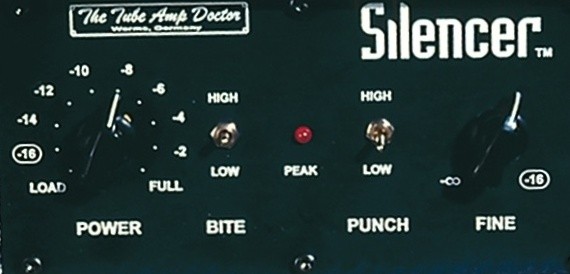
As well as being used in the living room at home or for ear-friendly rehearsals, the silencer can also be used very well in a studio setting. The possibility of running the power attenuator by Line Out or F.A.N.T.A. output directly in recording or PA use is very convenient, especially with more complex guitar setups. Even with direct output in PA or recording systems, the Power Soak delivers the usual cabinet sound, thanks to integrated speaker simulation. The Power Soak or power attenuator is available in a 2-, 4-, 8- and 16-ohm version, so it can be ideally adapted to the existing system. Packed in a high-quality Tolex box, the Power Attenuator cuts a fine figure – not only in terms of sound!
Power Soak for power reduction – conclusion
Practice amps, amplifiers and guitars require a certain basic volume in order to be able to develop their full sound characteristics. For technical reasons, the power tube saturation can only be achieved at high volumes. Especially in rehearsal situations or when practicing at home, this volume is often not wanted. While headphone output, master volume or low total power can be solutions for special practice amplifiers, a Power Soak offers the possibility of playing existing live systems in an ear-friendly way. However, with a lot of attenuators there is a loss of sound, as high and low frequencies are clipped. With the TAD Silencer and the integrated BITE or PUNCH control, this frequency loss can be compensated for and you can enjoy the full tube sound at lower volumes!
___________________________________________________________________________________________________________________________
Image sources:
Article image: © JAVIER LARRAONDO – stock.adobe.com
Young man with electric guitar: © jayzynism – stock.adobe.com
Close-up guitar amplifier: © Peter Albrektsen – stock.adobe.com
 Tubeampdoctor Magazin
Tubeampdoctor Magazin
